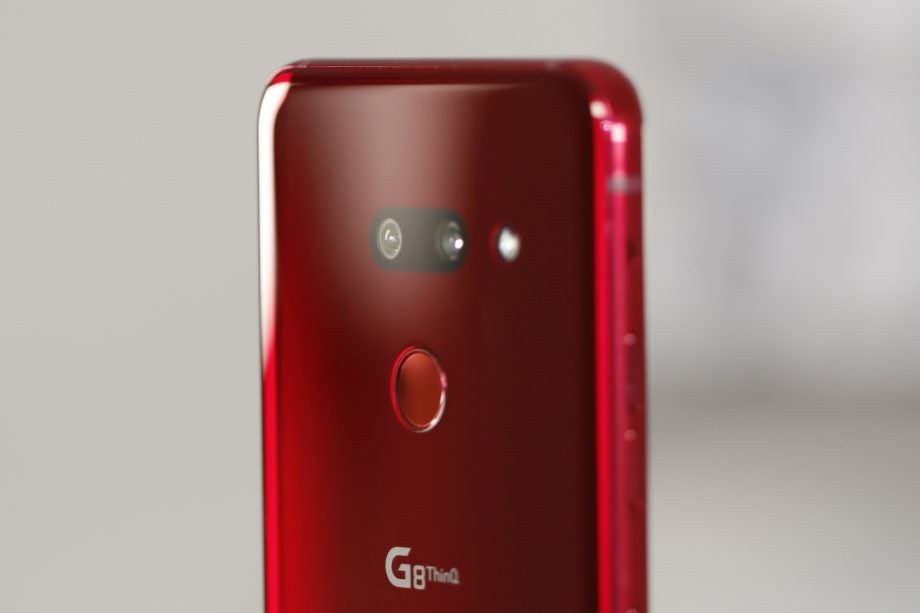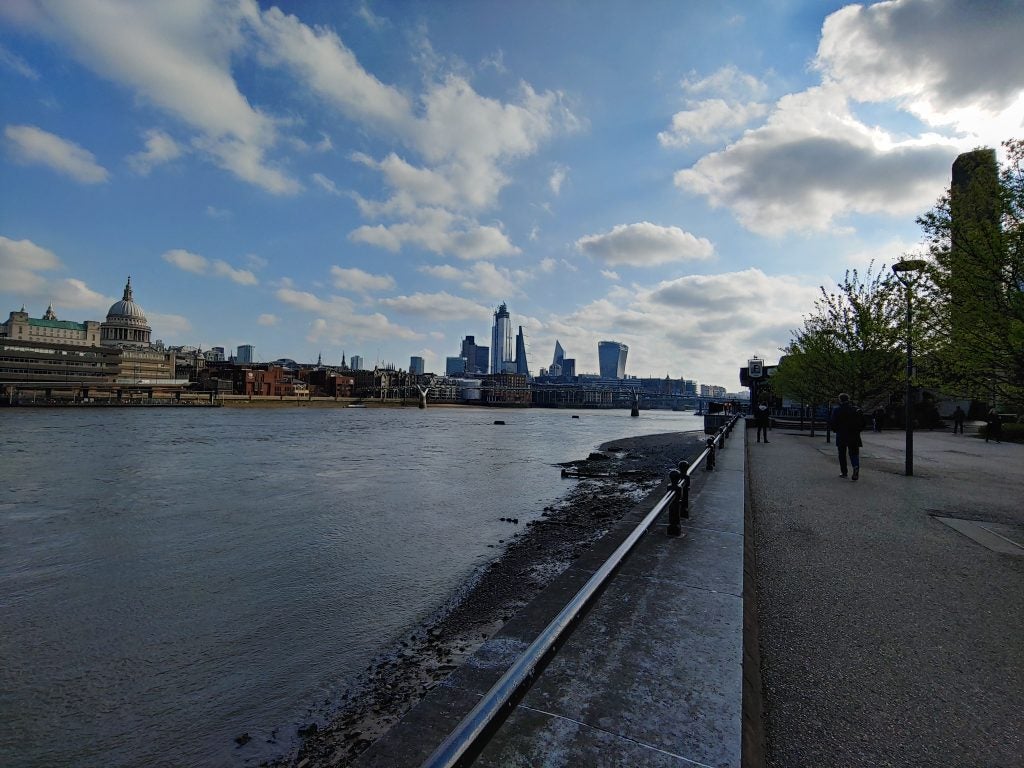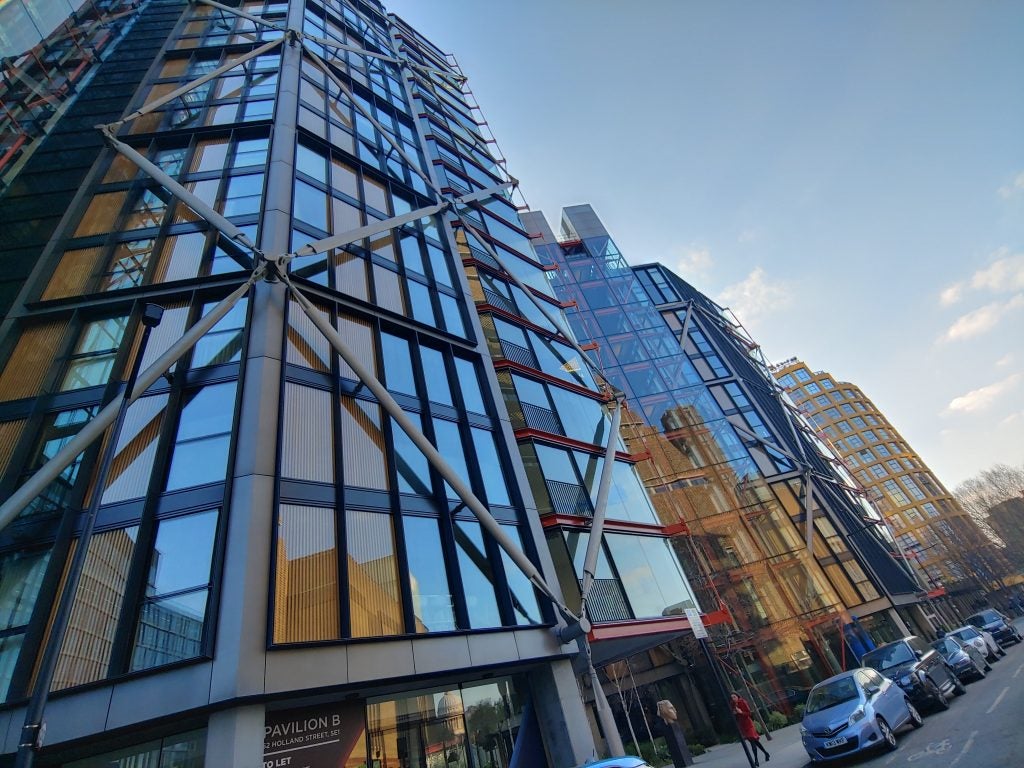LG G8 Review - Camera Review
Camera
LG G8 camera review

Sections
- Page 1 LG G8 Review
- Page 2 Camera Review
- Page 3 Performance Review
- Page 4 Screen Review
- Page 5 Battery Life Review
How good is the LG G8’s camera?
- The LG G8 features two cameras on the back: a primary 12-megapixel sensor and a secondary 16-megapixel ultra-wide angle sensor.
- LG’s AI Cam feature adds automated scene detection that alters settings and image processing as it deems appropriate.
- Its dual camera setup also allows for real-time adjustable bokeh, Portrait mode-style, even when shooting video.
LG hasn’t rewritten the rulebook with the camera arrangement on its 2019 flagship. Instead, the phone looks to offer a tuned take on the dual cameras found in last year’s LG G7.
The Korean phone maker was one of the first to introduce a second ultra-wide angle snapper right at the start of dual-sensor adoption. Such a choice helps if you’re looking to fit more in-frame on a regular basis, or simply to take snaps with a more dynamic and dramatic feel.
There’s a 12-megapixel primary sensor here, boasting an impressively wide f/1.5 aperture, a 27mm focal length, a 1.4µm pixel size, dual-pixel PDAF (phase detection autofocus) and OIS (optical image stabilisation) – all of which should collectively bring impressive clarity to shots, not to mention elevate the phone’s low-light credentials.
Related: Best camera phones
The 16-megapixel, 16mm ultra-wide sensor next to it isn’t quite as well-equipped. It has a narrower f/1.9 aperture, smaller 1.0µm pixels and no dedicated autofocus tech – although, as well as granting a wider field of view, it also helps the phone gauge depth when using Portrait mode.
As for the front-facing 8-megapixel autofocus camera, it’s a promising effort on paper, with an f/1.7 aperture and 1.22µm pixels. Paired with the phone’s “Z-camera” depth-sensing ToF (Time of Flight) sensor, it too can gauge the distance between foreground and background better than a standalone RGB sensor. Now onto picture quality…
LG G8 camera: Natural light
In natural light quality and detail are pleasing, while colours appear natural; dynamic range is a touch narrower than comparable rivals, however.
Blackfriars: Auto (left), AI Cam (right)
Flip from Auto HDR to the G8’s AI Cam mode and you’ll instantly notice the difference. In this instance, the mode has brightened the image, boosted colour saturation and seemingly made better use of the available light to present what appears to be a greater dynamic range.

In natural lighting the ultra-wide angle lens actually appears to undergo greater post-processing; colours offer more vibrancy, but fine details get smoothed out a little too hard.
Neo Bankside: Auto (left), AI Cam (right)
Fine details appear a touch murky when cropping in, but the phone still captured a pleasing overall image here.
As with the Blackfriars shots, AI Cam mode boosts colour and actually expands the apparent dynamic range instead of pushing heavier-handed contrast onto the resulting image, as AI-assisted shooting modes tend to do.
In pushing the colour, this shot appears a little too far away from the original scene, with an overtly cool appearance. This suggests that, although a worthwhile inclusion, use of the G8’s AI-enhanced imaging isn’t always the way to go.

This ultra-wide-angle photo lacks contrast, but that 16mm focal length allows for an otherwise unobtainable shot.
The ‘Green Man’, Gibb Street, Birmingham: Auto (left), AI Cam (right)
Where the phone’s AI does shine is when you’re looking to add a little extra “pop” to your shots. The G8 also demonstrates pleasing detail retention in these photos of the “Green Man”.
LG G8 camera: Low light
One would hope that when the lights go down, the technologies that LG includes in the G8’s main snapper would help grant it competitive capabilities when going up against the likes of Google, Huawei or Samsung. Sadly, the phone misses the mark here.
Even with AI Cam switched on, the phone struggles to take in enough light to pick out any details – aside from the brightest of the backlit leaves further back in the scene. Activating the phone’s Night View mode was the only way to pick up more of the foreground elements here; however, fine details are still lacking.
AI Cam (left), Night View (right)
Drop the lights even lower and things become truly unusable, with only the very edge of the glass candle holder being visible.

The Google Pixel 3’s Night Sight feature is better at pulling out subjects with little light available; however, fine detail is still lacking. I tried using what is widely considered the best camera phone in the business right now – the Huawei P30 Pro.
Google Pixel 3 with Night Sight (left), Huawei P30 Pro with Night mode (right)
Sure enough, although the resulting image isn’t necessarily attractive, it’s far closer to usable. Elements that fall into complete darkness when shooting with the LG G8 are visible and legible (like the writing on the egg in the foreground).
Images such as this highlight the work that LG still needs to do to ensure a more competitive camera experience going forward.
LG G8 camera: Artificial light
The G8 retains a pleasing level of detail in artificial lighting but as with exterior scenes, when using the standard Auto mode over its AI Cam setting, it seems to produces flatter, warmer imagery that appears unbalanced and inaccurate.
Ghetto Golf, Birmingham: Auto (left), AI Cam (right)
LG G8 Camera: Food/Macro
Even without the use of the phone’s AI Cam, the G8 copes far better with subjects that are closer to the lens. There’s plenty of fine detail and accurate colour and exposure capture on display.
The Mill, Digbeth: Auto (left), AI Cam (right)
Like the “Green Man” photo, using AI produces unrealistic but punchier results.
Addiscombe: Auto (left), AI Cam (right)
LG G8 camera: Portrait mode
Alongside Hand ID and a robust face unlock feature, which even works in low light, the ToF “Z camera” that accompanies the LG G8’s main 8-megapixel front-facer is on call to provide depth data when snapping Portrait mode selfies.

The RGB camera displays surprisingly good dynamic range, while the ToF sensor’s depth data proves highly reliable, arguably making for some of the most accurate edge detection I’ve seen on a smartphone. You can adjust the bokeh in real-time before snapping a selfie, and while the maximum setting (as pictured above) is definitely too heavy-handed an effect, it’s easy enough to dial back for more subtle, pleasing results.
Pull the front-facer out of natural light and into a less-ideal scenario and quality quickly breaks down, with weaker edge detection and overall detail.


